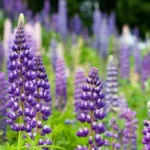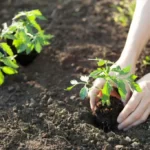Potatoes, with their incredible versatility and widespread culinary appeal, have secured a prominent place in kitchens and cuisines across the globe. Yet, in the realm of plant classification, a common misconception often arises: Are potatoes, surprisingly, legumes? This intriguing question challenges our understanding of these starchy tubers. To unravel the truth about potato classification, we must embark on a journey that delves into the world of legumes, their defining characteristics, and the precise botanical classification of the potato plant. Let’s explore this culinary puzzle and uncover the facts about whether potatoes belong to the legume family.
- A good source of Potassium
- A good source of Vitamin C
- One order of Russett Idaho Potatoes, 4 pound case
Legumes and Their Characteristics
Legumes are a distinct family of plants celebrated for their unique characteristics. One defining feature of legumes is their fruit, which typically develops in pods. These pods can take various forms, from the elongated shape of peas to the kidney-like form of beans. An exceptional trait of legumes is their ability to fix nitrogen in the soil, enhancing its fertility and benefiting neighboring plants. Legumes are nutritionally notable for their high protein content and are renowned for their contribution to both plant-based diets and agriculture.
The Potato Plant: Botanical Classification
In the botanical world, potatoes have their own distinct identity. The potato plant, scientifically known as Solanum tuberosum, belongs to the Solanaceae family. This places it outside the legume family, distinguishing it from plants that bear true leguminous pods. The characteristics of the potato plant further separate it from legumes. Unlike legumes, potatoes grow as underground tubers, and their fruits, which resemble small green tomatoes, are not the prominent part of the plant that we consume. Within the Solanaceae family, potatoes share botanical ties with other well-known crops such as tomatoes and bell peppers. Understanding this botanical classification is crucial for dispelling the misconception of potatoes as legumes and appreciating their distinct place within the plant kingdom.
Why Are Potatoes Confused with Legumes?
The misconception that potatoes belong to the legume family has historical and cultural roots. Potatoes and legumes, such as peas and beans, have played essential roles in diets around the world. They share significance as staple foods and sources of sustenance, often featuring prominently in traditional dishes. This shared culinary importance has led to confusion. Over time, the distinction between these plant families blurred, and potatoes occasionally found themselves wrongly associated with legumes. In some regions and contexts, the misperception endures, but it’s important to unravel this culinary enigma through a clear understanding of plant taxonomy.
Nutritional and Culinary Distinctions
Nutritional and culinary differences between potatoes and legumes offer further evidence against the misconception. Potatoes are valued for their starchy composition, while legumes, being high in protein and fiber, contribute significantly to the plant-based protein sources. Culinary versatility sets potatoes apart, allowing them to star in a wide range of dishes, from comforting mashed potatoes to crispy fries. Legumes, on the other hand, are known for their role in soups, stews, and a variety of meat alternatives. The nutritional profiles and culinary applications of these two food groups underline the distinctiveness of potatoes and legumes.
Importance of Accurate Classification
Accurate botanical classification is not merely an academic exercise. It holds considerable importance for agricultural practices, crop management, and crop rotation. Misidentifying plants can have unintended consequences for the health of the soil and the success of crops. Precise classification is also significant in addressing allergies and dietary restrictions. Understanding which plant families a particular food belongs to helps people make informed dietary choices and manage dietary requirements effectively. The culinary world relies on precise classification for ingredient selection and recipe development, highlighting the practical consequences of accurate plant identification.
Conclusion
In conclusion, the notion of potatoes as legumes may persist in some culinary circles, but it’s essential to clarify this misunderstanding. Potatoes, with their versatile and starchy nature, belong to the Solanaceae family, distinct from the legume family. By understanding the unique characteristics of legumes and the botanical classification of the potato plant, we can dispel the misconception. Nutritional and culinary distinctions further emphasize the differences between these food groups. Precise plant classification is a fundamental aspect of agricultural and dietary decision-making, with practical implications for both crop management and personal dietary choices. So, the next time you enjoy a plate of potatoes, you can appreciate their distinct place within the plant kingdom and savor their unique attributes.





